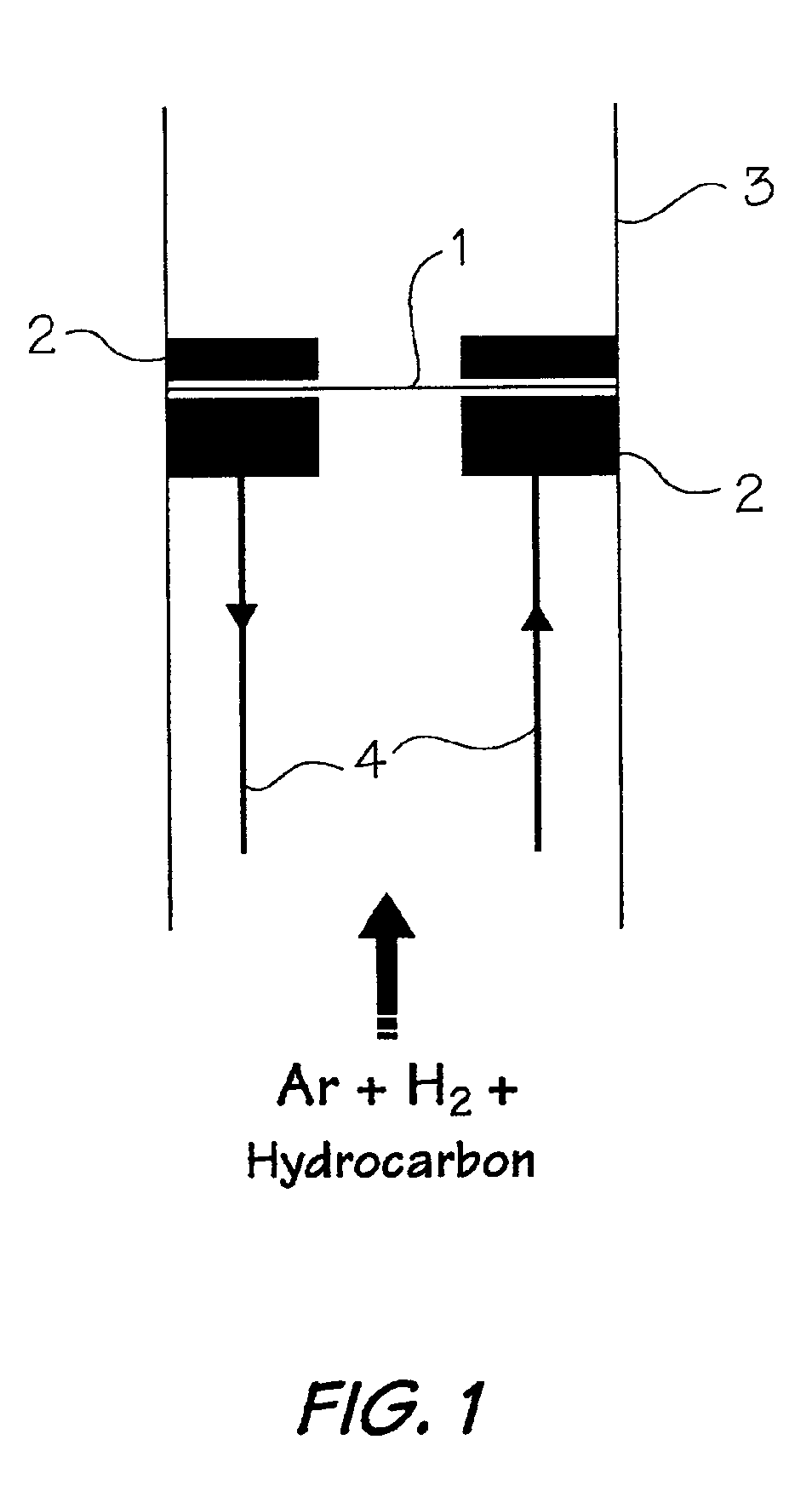Process for preparing carbon nanotubes
a carbon nanotube and carbon nanotube technology, applied in the direction of carbonsing rags, chemistry apparatus and processes, energy input, etc., can solve the problems of large amount of energy required in the evaporation process, large quantity of amorphous carbon, low yield
- Summary
- Abstract
- Description
- Claims
- Application Information
AI Technical Summary
Benefits of technology
Problems solved by technology
Method used
Image
Examples
Embodiment Construction
Catalyst Preparation
[0021]A dipping solution is prepared by diluting a 50% solution of 2(4-chlorosulfonylphenyl) ethyl trichlorosilane having the formula:
in dichloromethane with water in ethanol solution (6 vol %) to a silane concentration of 0.5 to 3 vol %. After stirring the solution for 2 hours at room temperature, different amounts of catalytic metal salts of cobalt nitrate and nickel nitrate with a 1:1 metal ratio were added to the silane solution to give catalytic concentrations ranging from 0.15 to 1.0M. After further stirring for 30 minutes, carbon papers for use as catalyst supports were immersed in the solution for 10 seconds and dried with filter paper.
[0022]It is believed that the principle of the silane procedure is based on the fact that the silane used has three Si—Cl bonds, which react with OH groups on the fiber and with the water to form a silicate monolayer on the fiber which is covalently bonded to the fiber. At the free end of the silane molecule, the sulfonic ...
PUM
 Login to View More
Login to View More Abstract
Description
Claims
Application Information
 Login to View More
Login to View More - R&D
- Intellectual Property
- Life Sciences
- Materials
- Tech Scout
- Unparalleled Data Quality
- Higher Quality Content
- 60% Fewer Hallucinations
Browse by: Latest US Patents, China's latest patents, Technical Efficacy Thesaurus, Application Domain, Technology Topic, Popular Technical Reports.
© 2025 PatSnap. All rights reserved.Legal|Privacy policy|Modern Slavery Act Transparency Statement|Sitemap|About US| Contact US: help@patsnap.com



